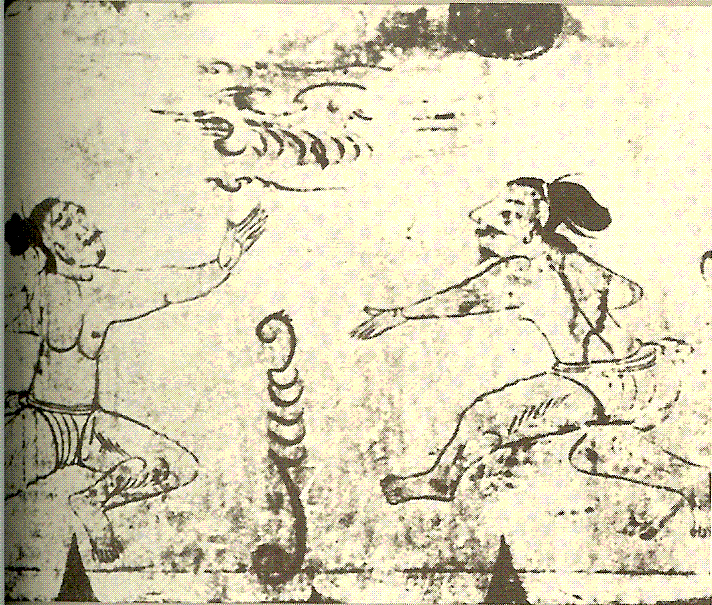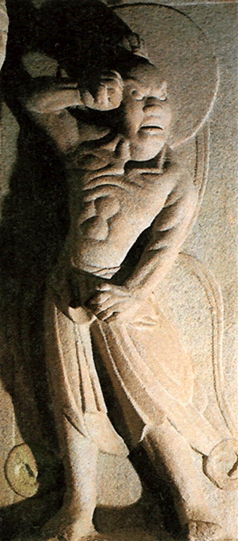Didn't this whole 2000 year (well, actually 1300 year) thing come about because someone had uncovered some drawings at a temple...
As I understand it, it's a few things:
1. The mural below, discovered by archeologists in 1935, appears on the ceiling of Muyong-chong, a royal tomb in southern Manchuria built during the Koguryo dynasty, between 3 C.E. and 427 C.E. Some scholars believe it depicts unarmed combat, while others believe it depicts a form of dance.
2. The stone sculpture below known as the Kumgang Yoksa depicts two figures, each about 2 meters tall, flanking either side of a doorway in a Buddhist temple in what was ancient Silla. The sculpture appears to depict two men in unarmed combat. The sculpture has been dated to the 8th Century CE.
3. There's not a lot more to go on than things like murals and sculptures, because written records from ancient Korea are scarce:
a) The Korean people didn't write much to begin with, since they didn't yet have their own alphabet (Hangul) and so learning to writing using Chinese characters (Hanja) was difficult -- so even more-so than other parts of the world, there's not a lot of written records from ancient Korea.
b) Even if the Korean people had done a lot of writing, most of what writing there
was was burned when the Mongols invaded Korea anyway.
4. So lacking any hard historical evidence one way or another, and desiring to reconstitute Korean culture after the occupation by Imperial Japan, the claim was made that taekwondo has historical antecedents dating back through centuries.
My opinion: taekwondo probably has as much historical antecedent in ancient Korean martial arts as modern LARPing (live-action role-playing) has in realistic medieval combat. That is to say, very little connection...other than inspiration perhaps. (And by the way, inspiration shouldn't be entirely dismissed as unimportant...inspiration motivates.)
Moreover, there are some people nowadays who say that the Koreans probably didn't have any kind of ancient martial arts -- that what we see are just murals and sculptures of
dance. Personally, it's my opinion that even if those murals and sculptures are of dance, it seems very unlikely that there would be NO martial arts in ancient Korea. With all the cultural interchange occurring back then between China, Korea, and Japan I don't see any reason why martial arts traditions wouldn't have spread as much as other cultural influences: writing, religion, agriculture, etc.


